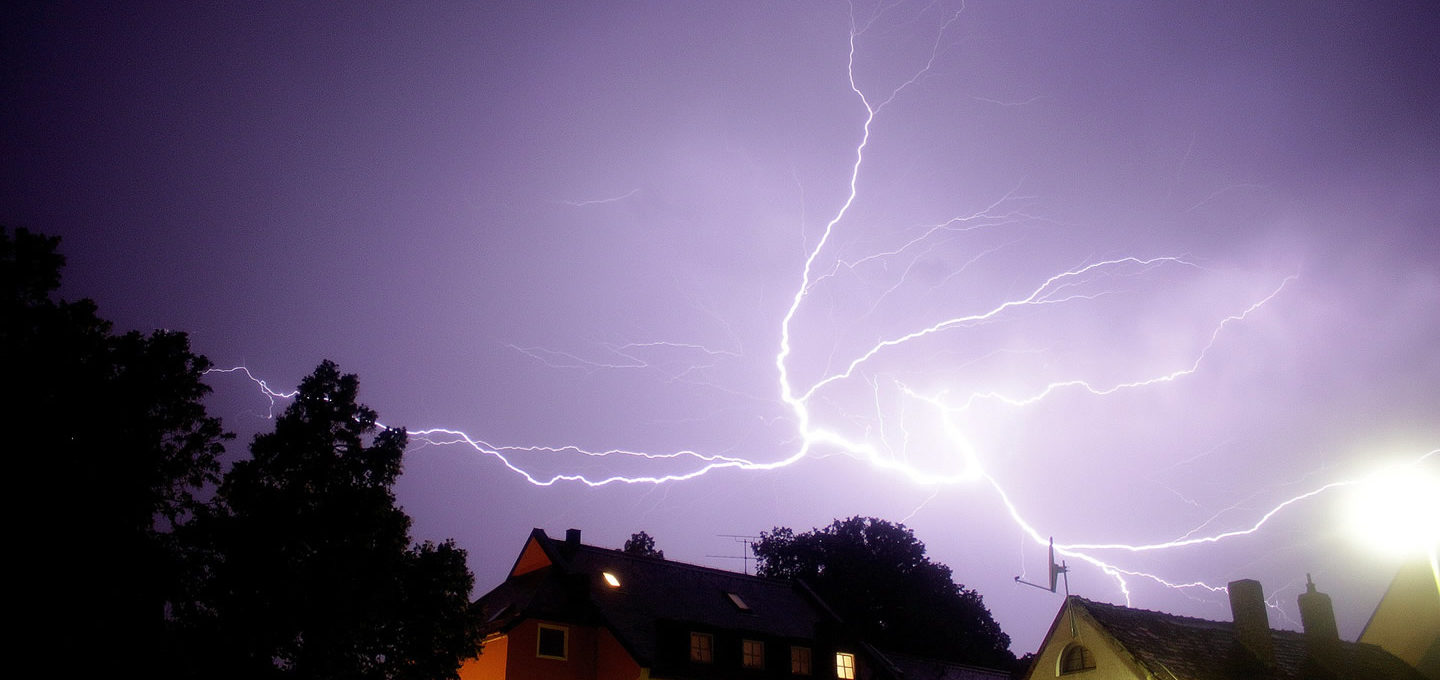There’s a lot to like about summer: Warm weather; long days; healthy, natural doses of Vitamin D. But there’s plenty not to like as well: Those hot and sticky days when you pray your air conditioner doesn’t break down…and those stormy nights when you pray your surge protector does its job.
Lightning strikes, as we know, are bad for electronics—especially that external hard drive you use to store all your family photos (and torrented episodes of Game of Thrones – shh, we won’t tell anyone). In fact, the data recovery experts at Gillware see a clear pattern every year: as the summer months fall upon us and lightning storms become more common, we start seeing a lot more lightning-fried hard drives come into our lab.
How does lightning fry my hard drive?
Your average bolt of lightning discharges about 30,000 amperes, and the current can peak at up to 100,000 amperes. That’s a lot. By comparison, a typical circuit board usually can’t take much more than a small amount of static electricity before it fries. Even a 10-volt fluctuation in power can destroy the microprocessors found in many of the devices we take for granted.
If you’ve ever looked up resources for building your own computer, you’ll find that most how-to guides tell you to ground yourself, usually by way of an anti-static wristband. This is because in some situations, even a little bit of static electricity discharged from your fingertip to your motherboard can render that piece of hardware you bought off Newegg for $90 inert.
Your hard drive is just as much at risk. Its PCB, or printed circuit board, controls the flow of both power and data back and forth between the drive’s internal components and your computer. Smaller USB external hard drives draw power directly from your computer through the USB cable, while larger desktop-sized hard drives use a power cable that plugs directly into your wall outlet (or surge protector).
When a lightning strike touches down near your home, or just near a power line in the area, it can send a burst of electricity into your home, through your outlet, and through the power cable. When it hits your external hard drive, its PCB greedily gobbles it up. But its eyes are bigger than its stomach, and the massive voltage can short out or even severely burn the PCB. This turns your hard disk drive into, more or less, a paperweight.
Why didn’t my surge protector help?
Of course, you’re protective of your computer and electronics. You keep them plugged into power strips with surge protectors so they stay safe. So how can this happen to you?
There are two reasons your surge protector might not be of any use to you in a lightning storm.
Firstly, your surge protector just isn’t meant to handle that big of a surge. Most of the power surges you encounter on a daily basis are tiny – so tiny, in fact, that you don’t notice them. That’s your surge protector, doing its job. But a lightning strike produces a power surge that dwarfs normal surges by orders of magnitude. If it’s distant enough, most of that current has dissipated before it reaches your house, putting you in significantly less danger. But a nearby lightning strike can hit you with the full force of the current.
Secondly, your surge protector has a component inside of it called a varistor. The varistor is, essentially, what makes a surge protector a surge protector. What many people don’t realize, though, is that the varistor degrades over time. Every time it takes care of a little power surge, it gets a little older and weaker. Eventually, it stops being able to protect you at all.
As the experts say, the best thing you can do in a lightning storm is unplug your sensitive electronics.
Lightning strike hard drive repair
There are two common symptoms of lightning-related hard drive failure.
Commonly, the hard drive won’t spin up at all when you plug it in. This is because the shorted PCB can no longer send electricity to the hard drive’s spindle motor and other internal components. If the PCB has become severely damaged, you may even smell something burning or see smoke. A smoking hard drive can be especially dangerous, because plugging it into your computer may in turn fry your motherboard as well.
Another symptom of lightning-related hard drive failure is hard drive clicking or beeping. This typically occurs if you lose power while your hard drive is running. An unexpected loss of power can sometimes cause your hard drive’s read/write heads to crash onto the hard disk platters. This can destroy the heads, causing your hard drive to make clicking noises. It can also cause the platters and spindle motor to get stuck in place, producing a weak beeping hard drive noise.
If you experience any of these symptoms, you will need to rely on professional hard drive recovery specialists to recover any critical data from your hard drive. Even fixing or replacing a burned PCB requires special skill and know-how, let alone safely opening up the drive and replacing failed internal components. Hard drive repair is a complicated process that should only be carried out by skilled professionals.
Photograph by Mannii2705

